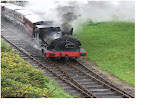In American railway terminology, the term consist is used to describe the group of rail vehicles which make up a train. When referring to motive power, consist refers to the group of locomotives powering the train. Similarly, the term trainset refers to a group of rolling stock that is permanently or semi-permanently coupled together to form a unified set of equipment (the term is most often applied to passenger train configurations). In the United Kingdom, the interchangeable terms set and unit are used to refer to a group of permanently or semi-permanently couple vehicles such as those of a multiple unit. While when referring to a train made up of a variety of vehicles, or of several sets/units, the term formation is used. (Although the UK public and media often forgo 'formation', for simply 'train'.)
In the United Kingdom, a train hauled by two locomotives is said to be "double-headed", and in Canada and the United States it is quite common for a long freight train to be headed by three, four, or even five locomotives. A train with a locomotive attached at each end is described as 'top and tailed', this practice typically being used when there are no reversing facilities available. Where the second locomotive is attached temporarily to assist a train up steep banks or grades (or down them by providing braking power) it is referred to as 'banking' in the UK, 'helper service' in North America.
he first trains were rope-hauled, gravity powered or pulled by horses, but from the early 19th century almost all were powered by steam locomotives. From the 1920s onwards they began to be replaced by less labour intensive and cleaner (but more complex and expensive) diesel locomotives and electric locomotives, while at about the same time self-propelled multiple unit vehicles of either power system
